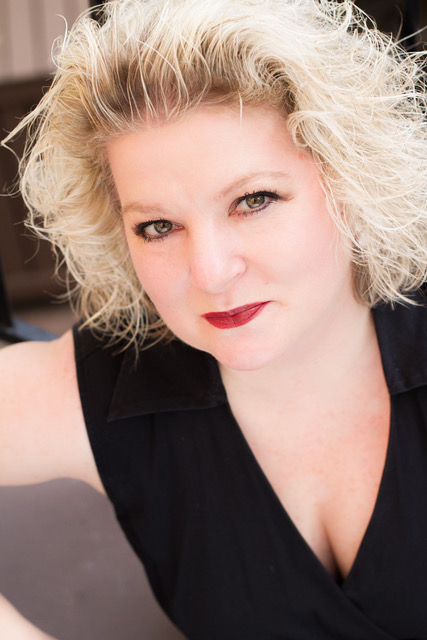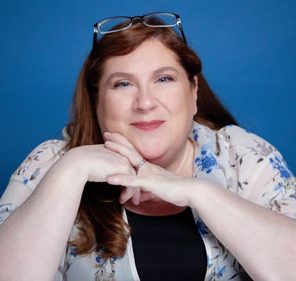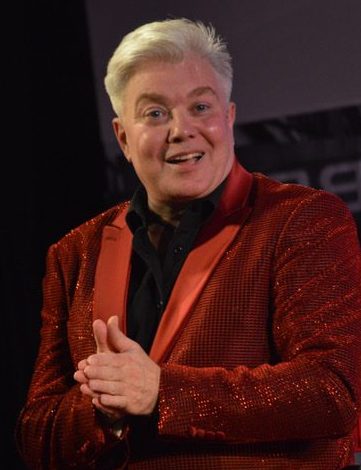Crowdfunding: The Do’s, the Don’ts, the Virtues, the Liabilities
Doing What You Have to Do to Get Your Work Out There
When James Beaman decided to return to cabaret after a 20-year absence, and in the wake of the pandemic, he admits frankly, he was short of cash. “I wanted to put on a show and needed money. I had to get past my own ego. ‘Who do you think you are to ask people to give you money so you can put on a show? How pathetic. Why should anyone care?’
“But I found that people do care,” he continues. “They want to be part of something. It gives them a sense of purpose. For them it’s uplifting and empowering. For me, it was affirming and humbling.”
He is talking about his experience with crowdfunding, specifically on Indiegogo.com, one of the two major crowdfunding sites for performing artists (filmmakers, visual artists etc). The other is Kickstarter.com, each a public online platform that reaches out to many contributors, most of whom donate relatively small amounts of money. Financial goals are stated up front.
Over a period of 60 days, Beaman achieved his goal, generating $3,000 from friends, family, fans, and others, thus enabling him to mount his popular and critically acclaimed comeback show, The Lived Experience, an amalgam of memoir, music, and tap dance. Accompanied by a three-piece band, it had all the earmarks of an old fashioned fun variety show with showmanship to spare. (Performed at The Triad, Oct. 2023).
Of course, Beaman is a well-known artist and more likely to raise money than an unknown performer, though it’s certainly not an unattainable goal if your project suggests seriousness of purpose and has the ring of legitimacy, he emphasizes. “But don’t crowdfund for a one-shot vanity project.”
Crowdfunding in its various iterations has been around for more than 25 years, Indiegogo was launched in 2008, Kickstarter in 2009. Despite crowdfunding’s familiarity (the word is part of our lexicography) and the fact that many, many performing artists have employed it successfully, it’s not without its challenges, emotional and otherwise. But it’s also well worth the effort and angst, at least among those I interviewed.
“Be Bold, Be Brave!”
“You want to put on a show, you do what you have to do,” says Tanya Moberly whose mantra, she asserts, is “Be bold, be brave!” and who ended up raising a stunning $60,000 on Kickstarter during a 60-day stretch, for her album, I Love New York Songwriters, recorded live at Don’t Tell Mama, in October and November of 2023. This was a double album recorded in four performances.
The New York songwriters in question are an equal mixture of the iconic, lesser known or unknown; living or deceased; and they run the gamut in style and sensibility. “I wanted the world to be exposed to these wonderful songwriters,” Moberly says.
Along with Beaman and Moberly, I spoke with Karen Mack who raised $7,985 on Indiegogo for her album, Catch & Keep; Richard Skipper, generating $7,000 on Kickstarter for his self-explanatory show, 60th Anniversary of Hello, Dolly! and Ann Kittredge, who rolled up close to $8,000 in eight weeks for her album, reImagine, on Sonically.com, a fundraising site for musicians that no longer exists.
“We were just coming out of the pandemic and I was short of funds,” recalls Kittredge. “I wanted to create my first album, but wasn’t comfortable about asking people for money. One of the reasons I decided to crowdfund was that the donors could be anonymous if they chose to be. I believe that’s true on all the sites. I figured what’s to lose? I did a search for a music crowdfunding source. I chose Sonically.com because I could keep all the money I raised whether or not I achieved my goal. I kept 79 percent of my $12,000 goal. There were no charges or penalties.”
Indiegogo also allows its participants to keep all the money generated even if their financial objective is not met, unlike Kickstarter which is an all or nothing concept. If you don’t succeed in meeting your requested amount, no money exchanges hands. Both crowdfunding sites charge nominal fees (5-10 percent) for their services and set a 60-day limit for the fundraising campaign, though shorter time spans are encouraged, not least because donors can quickly lose interest and the momentum is lost. Detailed, customized suggestions are offered for projects on both sites.
There is no one size fits all, and the reasons for choosing one crowdfunding source as opposed to another is a matter of personal finances, long-term plans, temperament, fluke, or combinations thereof.
Moberly says Kickstarter’s all or nothing approach spoke to her high-risk personality, serving as yet a further incentive to succeed. “I jumped off the cliff! I announced the album even before I had any money.” she comments. “I wanted to make it happen.”
The first order of business, of course, was figuring out precisely how much money she’d need for four live performances that would be filmed and recorded. From the outset she knew this was an ambitious project and the budget would have to cover the cost of “musicians, an audio engineer, recording equipment, the manufacturing of CDs, and the licensing of 45 songs,” she recalls. “And then there was the cost of additional marketing.” Moberly brought on board publicist Betsyann Faiella to help her with creating a video and campaign pitch among other services.
“It was boots to the ground,” she says. “I set up Facebook and Instagram accounts and then contacted anyone I had ever met, not just in theatre, folk, rock, and jazz, but anyone in my phone book who was breathing. I’d then follow up with calls and texts and emails daily. I figured if I get a little money from a lot of people I could do this. Some people gave $10, others gave $1,000. It was always presented as an invitation, not an obligation. I then came up with the idea of ‘matching.’ I said if I get $1,500 by a certain date I will match it. I also offered various perks. Everyone is encouraged to do that. For $1,000 pledge I offered to make a lasagna dinner. For $2,500 the contributor could have lunch with Julie Gold. I also offered, depending on the size of the contribution, a voice lesson donated by Rosemary Loar or a song written with them by Andy Marino, both song writers on the album. In the end, I had $60,000 in pledges and today my CD is available on almost all streaming platforms.” (To illustrate best the extent to which Moberly went to make her page on Kickstarter look especially inviting to potential donors, click here. And listen here to her album in its entirety,: tanyamoberly.hearnow.com
She offers a few caveats: crowdfunding beneficiaries pay taxes on the monies raised; contributors cannot use their donations as tax write-offs nor can their contributions serve as profit-making investments for them. They don’t make any money off the show or album. Theirs is simply a donation, although in some instances the perk may be a “producer’s credit.”
All agree the need to utilize social media platforms to further update developments and further spread the word is a must. Some fundraisers are relentless in their barrage of updates; others are more circumspect, choosing particular individuals or groups at particular times, such as the inevitable lulls during a fundraising campaign. Who you approach for money and when is also highly individual. Some advocate a buckshot approach; others argue for more targeted marketing; still others do both at different times during the campaign.
After deciding she needed $12,000, Kittredge personally contacted a number of people whom she thought might be likely contributors. “I wanted to have approximately 40 percent of the money committed to me before I started fundraising online.”
Many say they go to their families first; others say their families are not targeted until the end when a goal has almost been reached, at which time they might be the most likely to kick in the final bucks. In almost all cases the posted campaign, in and of itself, gives the request for money legitimacy that might not be there otherwise, perhaps most pointedly with family members.
“If my brother sees that others are giving me money, it’s less likely that he will say to me, ‘Oh, why can’t you just get a job?’” says Beaman. “Also, he doesn’t feel like he’s being pressured in the same way.”
“Every Contributor Is Putting Faith in You”
Choosing Indiegogo for her most recent album, Karen Mack feels that unless you need all of the money immediately and will not move forward if you do not make your goal, Indiegogo may be a more practical option than Kickstarter. Most obviously, it’s better to end up with some money rather than none.
Still, you need to be very serious about achieving your financial goal and need to have alternative ways of raising the necessary money if you do not meet your campaign goal. “Every contributor is someone putting faith in you, what you say you’ll do. It’s easy to lose credibility on all fronts if you’re not a solid business person, making good what they gave towards,” Mack says.
Mack had determined she’d need approximately $14,500 to start the studio album she had in mind, working with a particular producer and band. She admits she earned slightly more than one half of what she’d hoped. “But everyone I approached was enthusiastic and happy to give, even those that couldn’t give much at the time. I loved the chance to let people be a meaningful part of this project from the very start. That made a real difference.”
At the end of her campaign, with only half the seed money in hand, Mack knew she’d have to find other resources. “Eventually I had to dig into my own pocket like most of us do,” she recalls. “It took me much longer than I anticipated to pull all the necessary funds together. But Indiegogo and social media made it easy to keep my original contributors updated on what I was doing and how close I was to achieving our goal. I thought I’d have the album ready early 2024. We finally released it at the end of June, and the release concert is now set for Monday, August 26 at Birdland.”
Money issues aside, Mack suggests that crowdfunding gives your fan base an active way to participate in what you’re doing. “The platform presents an organized snapshot of your project and it’s a way of generating support, enthusiasm and perhaps even a wider audience for your work now and in the future.” she says.
“ Look under Every Nook and Cranny to Get the Word Out“
Richard Skipper, an entertainer, host, and raconteur, admits he had some reluctance about crowdfunding for his return to live performance (after a four-year absence) with his celebration of the 60th anniversary of Hello, Dolly!
“Some people love crowdfunding, others say it cheapens your brand,” he says. “During the pandemic, when I started a livestream podcast celebrating artists, it cost me a lot of money. So when I decided to go back to live performance, after four years, and over 1,000 interviews, my funds were depleted.” He pauses to reflect, “Everyone is struggling. Everyone is self-producing.
“For decades I made a healthy living performing as Carol Channing at theatres and performing arts centers around the country. I was flown in and paid for each performance. The theatres promoted my shows to fill seats. At the time, most of the theatres had subscription series that covered my expenses.
“After 9/11 that changed, and it got even worse after the pandemic. The theatres were no longer operating on whole season subscriptions, but selling tickets individually for each show. Performers often need to rent the space and theatres no longer have a vested interest in promoting shows presented in their auditoriums. The performers have to produce and promote the shows themselves.”
Skipper is no stranger to marketing for other performers as well as himself. Other artists have called him “a forerunner in the field” and “brilliant at it.” In addition to his podcast and his regular online updates, he publishes a weekly online newsletter and sells merchandise, including Richard Skipper/Carol Channing coffee mugs.
“I look under every nook and cranny to get the word out,” he says. “But money was never the driving factor. I was very uncomfortable with the idea of crowdfunding.”
“Everyone Wants to Be Part of Something”
In fact, he never would have gotten involved in it at all without his assistant Erin Calev who brought the idea to jazz singer Angela DeNiro.
“We asked his permission and somewhere down the line, we had a Zoom with him to sort out a few details including what to set as our financial goal for the Kickstarter campaign,” says Calev. “We all decided on $5,500 —the costs of the first February show— and to then take the show on the road. I believe we raised a little over $6,000.
“I reached out to many of the people Richard had on his podcast letting them know about Richard’s project and offering information on how to donate, in addition to many groups around the tri-state area, including several gay men’s choruses who adored Carol Channing, and multiple local colleges, to inquire as to whether they might want Richard as a historian to bring his show to the college students. Everyone wants to be part of something. My husband’s aunt contributed. So did my yoga teacher.”
Angela DeNiro is well-versed in crowdfunding. She has raised on Kickstarter $5,500 for her husband’s album, Ron Aprea Pays Tribute to John Lennon & the Beatles, and $7,550 for their joint album, Angela DeNiro— Swingin’ With Legends 2 with the Ron Aprea Big Band.
“It’s easier for me to do it for someone else than for myself,” she says. “But I am formulaic and good at strategic planning. If, during the campaign, money is sloughing off, I know to ramp it up and perhaps approach friends at that point. And I’ve become aware of the red flags. For example, if suddenly a large pledge is made from someone you’ve never heard of, it may be a scam of some sort. When I saw an unknown contributor for Richard I contacted Kickstarter and they investigated, ultimately removing that individual’s pledge. I then had to notify the contributors that there was in fact a loss of money. The biggest challenge I faced was convincing Richard to reach out to everyone on his mailing list. I had to keep reminding him, ‘You’ve done so much for everyone else.’ I understand asking for money is difficult. You feel you’re putting yourself in a position where you’re saying, ‘If you don’t give me money you don’t love me.’”
In the end, Skipper put on two successful shows at the Beechman and is now looking forward to upcoming appearances in London, Paris, Palm Springs. He returns to NY on September 29 at the Green Room 42.
Plenty of Lessons To Be Learned
He is of course grateful and delighted with the Kickstarter results. But like all the other interviewees, ideally he will not have to crowdfund again, certainly not in the near future. All agree, it is labor intensive, time consuming, and no matter how you slice it, just plain difficult to ask for money.
Mack is hopeful that next time around she’ll land a producer, adding, “it will take me a decade to pay off the money for this album. But if I ever did crowdfunding again, I’d clear my schedule and focus my attentions 100 percent on the crowdfunding, connecting all the dots and taking full advantage of what Indiegogo offered.”
She urges those who are thinking of crowdfunding “to do your homework and have a realistic budget. Be clear about what crowdfunding sources can and can’t do. Crowdfunding sites facilitate a campaign, but it’s important to find other partners too.”
Kittredge says she was constantly “straddling the line between too much self-promotion and not enough and I’m still not sure about that. But if I were to crowdfund again, I’d keep expanding my base before I made it public or asked my colleagues and friends from the cabaret world for funds. Instead of running the campaign for eight weeks, I’d do it for six weeks.”
Some felt they should have launched their campaigns with higher expectations. “I asked for bare minimum, one musical director, three backup singers, who all received an honorarium, and the musicians,” recalls Beaman. “I should have been more ambitious.”
Still, he says he was fortunate in that the Triad, where he performed his show, does livestreaming, “But performers who don’t have that option, should include the cost of hiring a good videographer as part of their budget.”
He and the others are keenly aware of the vulnerability that may come with crowdfunding, especially if financial goals are not met. Yes, there’s always the possibility that the world at large may roll its collective eyes. Most of the interviewees insist they are not responsible for what other people might or might not think.
Beaman puts it this way: “Nobody wants to fail publicly, but everyone loves an underdog. The cabaret world is a community and crowdfunding feeds into that. People want to be part of that, especially in a dark time.”
###
About the Author
Simi Horwitz is an award-winning feature writer/film reviewer who has been honored by The Newswomen’s Club of New York, The Los Angeles Press Club, The Society for Feature Journalism, the American Jewish Press Association, and the New York Press Club (among others). She received an Honorable Mention from Folio: Eddie and Ozzie Awards for her two drag stories (May 22, 2020, August 4, 2020) published here on BistroAwards.com. More recently, she was the recipient of the 2023 New York Press Club Award and won three 2023 L.A. Press Club Awards., including first prize for film criticism (for reviews published in the Forward). The publications that have printed her work include The New York Times, The Washington Post, The Hollywood Reporter, Film Journal International, and American Theatre. She was an on-staff feature writer at Backstage for fifteen years (1997-2012).









